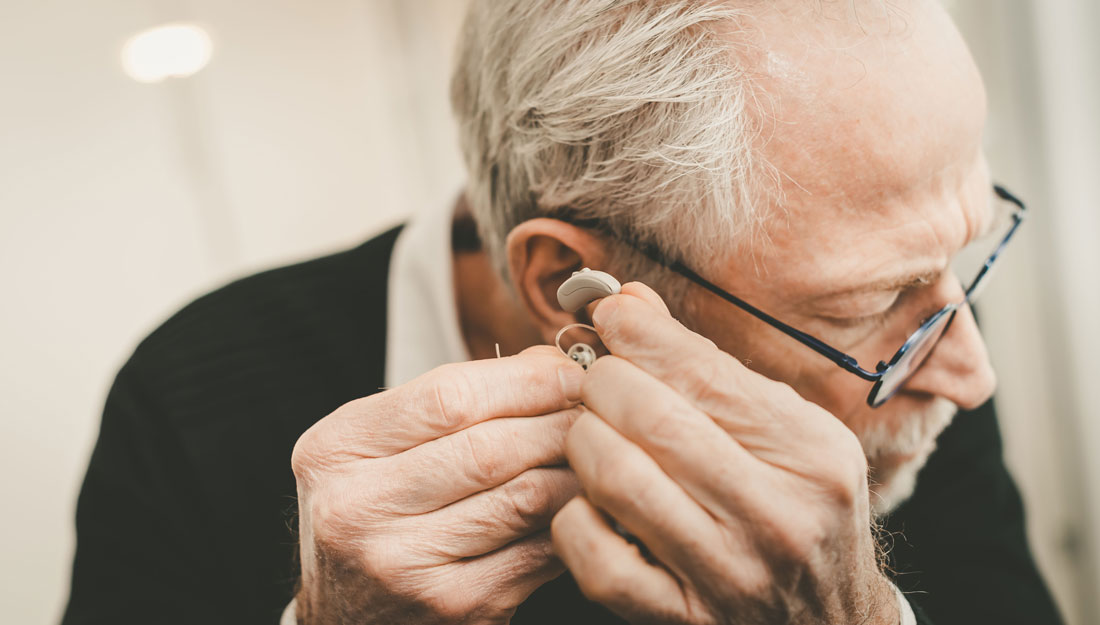- Tim Schnettler
- Public Health, Research, Show on VR homepage
Ukert part of team awarded $1 million National Institutes of Health grant to study hearing aid coverage, use
Research group will study the effect of hearing aid coverage requirements in insurance plans on hearing aid use

A group of researchers that includes Benjamin D. Ukert, PhD, assistant professor in the Department of Health Policy and Management at the Texas A&M University School of Public Health, is working to estimate the effect of hearing aid coverage requirements in Medicaid and private insurance plans on hearing aid use.
Hearing loss affects 23 percent of those aged 12 and older in the United States and more than two-thirds of adults over the age of 70 have significant hearing loss. Although Medicaid does provide hearing aid benefits in some states, insurance does not generally cover the cost for the purchase of the devices, which are the most successful way to manage hearing loss.
Further, as a result of the lack of insurance coverage for many in the United States, about 86 percent of hearing loss cases go untreated.
A group of researchers that includes Benjamin D. Ukert, PhD, assistant professor in the Department of Health Policy and Management at the Texas A&M University School of Public Health, is working to estimate the effect of hearing aid coverage requirements in Medicaid and private insurance plans on hearing aid use.
The research team recently received a four-year Research Project Grant (R01) from the National institutes of Health (NIH). The grant, which totals more than $1.3 million, will fund the team’s study, “The Effect of Hearing Aid Insurance Coverage Requirements for Adults on Utilization.”
The long-range goal of the team’s study is to understand the effects of improving hearing on health and to estimate the effect of coverage requirements on hearing aid use.
Despite evidence showing hearing aids as an effective treatment for hearing loss, state and federal governments have yet to widely adopt approaches to increase access. As a result, 67 to 86 percent of adults who could benefit from hearing aids do not use them, with high cost and lack of insurance coverage cited as the main reason, the researchers said.
However, Medicaid provides hearing aid benefits in 28 states and eight states do require private insurance benefits for at least some adults. According to the researchers, coverage requirements may improve hearing aid uptake by reducing costs as a barrier.
The research team has established three aims to evaluate how hearing aid coverage mandates have affected purchases and use. The goal is to estimate the effect of state private insurance coverage requirements for hearing aids on beneficiary hearing aid purchase and replacement, and out-of-pocket payments in fully insured health insurance plans; estimate the effect of Medicaid and private insurance coverage requirements on use of hearing aids in the National Health Interview Survey (NHIS), and Medicaid coverage requirements in the Medicaid-linked NHIS and Medicaid Current Beneficiary Survey (MCBS); and to estimate if coverage requirements affect some subgroups more than others based on sex, age, race/ethnicity, education, and high-deductible health plan (HDHP)
The team’s study will fill in critical gaps in the knowledge base on the direct effect of hearing aid insurance coverage requirements on adult hearing aid use and disparities in use. As a result, it could have implications on the effect of pending legislation to add hearing health care to Medicaid.
In addition to Ukert, the research team includes: Michael F. Pesko, PhD, associate professor in the Department of Economics at Georgia State University; Michelle Arnold, PhD, assistant professor in the Department of Communication Sciences & Disorders at the University of South Florida; Brandy Lipton, PhD, assistant professor in the School of Public Health at San Diego State University; Yasin Civelek, PhD, senior researcher in Health Economics Research at HealthCore; and Serena Phillips, DrPH, RN, in the Department of Economics at Georgia State University.
Media contact: media@tamu.edu


